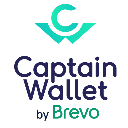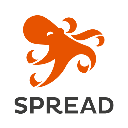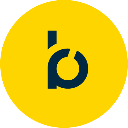The 14 types of customer loyalty tools (and examples!) to keep the flame burning with your customers
There are many customer loyalty tools available, using a variety of channels to reach targets where they are most receptive to small gestures.
Whether it's a question of old methods that are still effective or new digital levers, their strategic nature is no longer in question, given that loyalty costs less than the acquisition of new customers.
But what are these tools for managing customer relations effectively and sustainably? Answers and examples in this article.
What is a loyalty tool? Definition
For a company, loyalty means creating and maintaining a lasting relationship with its customers. Loyalty tools are the means available to achieve this effectively.
👉 The aim is to maximize profits and brand image, while guaranteeing sustainability and profitability.
It's important to distinguish between
What are the best ways to build customer loyalty?
Building customer loyalty is more than just offering a coupon. It's an in-depth process, based on relationships, trust and perceived value. Here are the most effective levers to activate:
- Reward loyalty: set up loyalty cards, benefit programs or surprise gifts. These gestures reinforce brand loyalty and encourage return visits.
- Personalize the experience: address your customers by their first name, recommend relevant products and tailor your messages to their preferences. A personalized experience leaves a lasting impression.
- Listen and respond to needs: set up effective listening channels (surveys, reviews, responsive customer service). Active listening is a powerful satisfaction driver.
- Create post-purchase value: offer useful content, tutorials, support and usage advice. A customer who continues to learn or progress with you is a loyal customer.
- Involve the customer in the brand: set up a sponsorship program, animate a community of customers, or involve your users in co-creation. Commitment creates attachment.
What are the tools of customer loyalty? 14 types of tools for your teams
How do you build customer loyalty? Rest assured, others have asked the question before you: so we've got some answers for you!
To implement your loyalty strategy, (re)discover the BtoB and/or BtoC loyalty tools (or loyalty levers) below.
Mobile wallets
Do you too have a collection of loyalty cards lying dormant at the bottom of a drawer (or worse, a bulging old wallet)? Your customers probably do too...
The good news is that mobile wallets are putting a stop to all that! In concrete terms, they're an application like Apple Wallet or Google Pay that lets you store your loyalty cards directly on your smartphone. No more searching for your card at the checkout or remembering a 12-digit code: everything is just a click away, and in real time.
Why is it a must-have for customer loyalty?
- your customers always have their card with them, and therefore their loyalty program at hand;
- brands can send push notifications with special offers, points reminders or personalized discounts;
- no more lost cards = no more frustrated customers abandoning their benefits!
🛠️ Captain Wallet sets itself apart from other solutions on the market by helping companies to dematerialize their loyalty cards and promotional offers on mobile wallets. Customers receive live updates on their points, coupons and even VIP invitations. The result: more engagement, more visits and an ultra-fluid customer relationship. All with a promise to make your competitors swoon: up to 2x more sales per customer!

Captain Wallet by Brevo
Loyalty program management software
Loyalty program management is also going digital. With software capable of creating, automating and tracking your customer loyalty actions.
How do you do this? By analyzing your customers' purchasing behavior to trigger targeted, relevant campaigns, without any manual effort. You can set up various mechanisms: points-based systems, sponsorship, cashback, exclusive advantages, etc.
🍒 The icing on the cake: these tools generally integrate with your digital ecosystem (CRM, e-commerce sites, emailing platforms, etc.), so you benefit from a complete view of the customer journey.
What are the benefits of these solutions?
- you effectively improve the customer experience, and by extension your retention rate;
- automate time-consuming tasks, so you can focus on more strategic ones;
- segment your customer base more finely.
🛠️ If you're looking for one of these, we recommend SPREAD, a complete marketing platform (marketing automation, CRM, etc.). Among its many features, you'll find tools dedicated to setting up tailor-made loyalty programs, with over twenty infinitely adaptable loyalty missions: leave a review, take part in a survey, follow your brand on social networks, etc. These missions, which can be deployed both online and in-store, can be combined with other loyalty programs. These missions, which can be deployed both online and in-store, can be combined with a sponsorship program.

SPREAD
Marketing automation platforms
A marketing automation platform enables you to automate customer interactions by sending targeted, personalized messages based on customer behavior. With these tools, you strengthen customer loyalty by maintaining an ongoing, relevant relationship with your customers. That's all we want, isn't it? 🙌
Here's how:
- Automatically send personalized e-mails based on customer actions;
- advanced segmentation for tailored offers;
- automated scenarios to accompany customers throughout their journey.
With these platforms, you optimize the customer experience by delivering relevant content at the right time, without manual intervention. The result: greater engagement and loyalty.
One specialized marketing automation tool is ActiveCampaign. This all-in-one email marketing platform automates your sales and CRM processes. In fact, ActiveCampaign automates your marketing channels using personal and behavioral data on your contacts. The result: more leads and faster closing of transactions.

ActiveCampaign
CRM
Importance and benefits of CRM software as a loyalty-building tool
CRM (Customer Relationship Management) is the ultimate customer relationship management tool , particularly for tracking customer history and satisfaction. A CRM centralizes all your customer information, such as :
- contact details and profiles
- purchase history and requests
- payment methods ;
- sales operations, etc.
Knowing and tracking this information enables you to:
- segment your customer base;
- propose customized customer paths and personalized offers;
- automate certain actions, such as sending e-mail campaigns at key moments, etc.
3 examples of CRM to build loyalty
🛠 monday.com CRM, for example, offers you a comprehensive, intuitive and easy-to-use CRM solution with advanced loyalty features :
- structure your customer data via visual, personalized files;
- track your prospects' progress via real-time dashboards;
- find customer information quickly thanks to seamless e-mail integration, etc.

monday CRM
🛠Sales Cloud is the CRM by Salesforce solution, ideal for managing your contacts. Among its many customer-focused features :
- a global view of all your customer interactions, so you can get to know them better;
- integration with your various social networks, tofind out what your customers think of your products and services;
- a chat function, so you can talk directly to your customers and obtain valuable information about their needs.
🛠 Sellsy is a complete CRM suite designed to manage your entire sales cycle, from prospecting to customer loyalty. Aimed at small and medium-sized businesses, it integrates a host of interesting features to satisfy your customers and optimize your NPS:
- fine-tuned contact management, with enriched data to identify your customers' needs and keep a record of exchanges with the company;
- marketing tools, to automate the sending of targeted campaigns to your segments (satisfaction surveys, for example);
- dashboards and reports to monitor your performance and improve your actions where necessary.
Omnichannel customer experience platforms (CDP)
If you want to offer your customers an unforgettable experience, but don't feel like (or have the budget for) a lot of software, turn to the global platforms known as Customer Data Platforms (CDP).
What's a CDP? We've got a full article detailing what it is, its benefits, how to use it and how to choose it! To understand CDP, click here.
💡 What you need to remember, in a very simplified version: it's a comprehensive tool that centralizes all your marketing and customer data, grinds it down, and comes out with customer profiles and personalized actions tailored to reach each target. With the help of your human intelligence, of course.
For example, Bloomreach is the 1st "sales experience" cloud that brings together all the features needed to create a unique customer experience, in a single tool. It offers a fully personalized customer journey to foster customer engagement and relieve your teams of their work by :
- leveraging your customers' data to create unique experiences across all your digital touchpoints (personalized e-mail campaigns, web personalization, etc.) ;
- using artificial intelligence and predictive marketing to create high-quality, API-focused content (search intelligence, product recommendations, etc.);
- creating reports, detailed statistics and dashboards to monitor your performance.

Bloomreach
The newsletter or personalized email
Focus on personalized e-mail
Emailing can be used for many purposes, such as to communicate a gift, a promotional code or an exclusive event, as mentioned above.
Personalized (and it's not just a question of putting the first name in the header, but of taking into account the customer's history and recent interactions with the company), it tells the customer that the company is interested in him, his needs, his tastes and his habits.
Whether it's a welcome email, an anniversary email, a satisfaction survey or an account reactivation email, any occasion is a good opportunity to use loyalty tools!
Here, Vert Baudet uses humor and a childlike tone to take the temperature and avoid unsubscribing from its newsletter, not without praising its merits.
Focus newsletter
For a company, a newsletter consists in sending a regular email to a list of recipients, also known as "subscribers". Most of the time, these e-mails are sent on a monthly basis. Its purpose is to inform readers about :
- your company's activity and/or news ;
- your events ;
- your commercial offers ;
- discounts.
It also enables you to promote your content (new article, white paper, interview...). The newsletter is therefore a real communication tool.
💡A ccording to the McKinsey Institute, its effectiveness is 40 times greater than that of Facebook and Twitter, in terms of customer acquisition.
The loyalty card or loyalty program
⬆️ Earlier, we talked about mobile wallets.
⬇️ Below, we talk about gamified loyalty programs.
👉 Here, we're talking about the good old loyalty card.
It's a loyalty tool that comes from setting up a loyalty program. This consists of offering your customer members a range of exclusive services and benefits, with the aim of building loyalty and encouraging them to buy.
The system is simple: the more your customers buy, the more their loyalty points increase, and the more gifts and rewards they receive. The loyalty card is therefore an optimal and effective way of tracking your customers' purchasing habits.
The advantages of a loyalty program are numerous:
- a personalized relationship ;
- a smoother shopping experience;
- tailor-made sales recommendations to encourage purchasing decisions;
- enhanced brand image.
Customer feedback tools
A customer feedback tool collects, analyzes and uses customer opinions to improve the experience and relationship they have with a brand or service. It can take the form of :
- survey software ;
- integrated surveys ;
- online reviews ;
- or even analytical dashboards centralizing customer feedback.
Thanks to feedback tools, a company can identify the shortcomings and strengths of its offering, then adjust its strategy accordingly. By making the most of customer feedback, you reinforce a sense of belonging and long-term commitment.
👉 For example, a well-structured feedback program enables you to anticipate needs, personalize the customer experience and optimize after-sales service.
After-sales service
When we talk about customer satisfaction, it sometimes involves after-sales service, i.e. the way in which customer service handles complaints and settles disputes by taking customer feedback into consideration.
👉 Quality after-sales service is therefore an underestimated lever for customer loyalty.
Catching up with an unhappy customer and taking care of them can help retain them, and even build loyalty.
💡Little post-purchase attentions are also appreciated, for example sending tips on how to use or care for the last product purchased.
Sponsorship
A sponsorship program is based on a simple principle: turn your satisfied customers into brand ambassadors. It combines loyalty and acquisition by encouraging existing customers to recommend your products or services to their friends and family.
In exchange, the sponsor receives a reward, often in the form of a discount, loyalty points or exclusive advantages. The sponsored customer can also take advantage of a welcome offer, which encourages them to make their first purchase:
- discount on next order for the sponsor ;
- special offer or cashback for the referral;
- access to exclusive benefits for recurring sponsors.
Referral programs are an excellent way to increase customer satisfaction while capitalizing on the power of word-of-mouth. A satisfied customer not only becomes loyal, but also your best acquisition lever.
👉 For example, brands such as Dropbox have built their growth on a referral system: by inviting a friend, both the referrer and the sponsored friend benefit from additional storage space. A win-win model that strengthens customer relations and boosts company visibility!
The multi-channel, even phygital approach
The customer experience is key to building loyalty. The purchasing process must be increasingly fluid: click and collect, web to store, these practices enable you to win the loyalty of customers who like to combine the two worlds, physical and digital, according to their desires and imperatives.
With online ordering and in-store trials, you can remove all the disincentives to purchase.
👉 If your main competitors have adopted it, go phygital before you lose your customers, who are increasingly volatile and demanding.
Social networks
Federating and animating a community is essential to building loyalty.
Social networks are essential communication channels for conveying your brand image and paying attention to your customers, especially when it comes to after-sales service.
You can collect their opinions, respond to them, and showcase your ambassadors who speak out. It's the ultimate proof of their loyalty and attachment to your brand, and it's there for all to see!
It's also a good place to organize contests, which are always very popular, and to communicate offers reserved for customers.
Self-care tools
On the web, customers like to be autonomous, but find the information they need easily. How can you keep them informed, while ensuring the fluidity of their digital customer journey ? By integrating selfcare tools! Set up :
- a chatbot on your website ;
- dynamic FAQs ;
- tutorials, etc.
In short, give them answers quickly and offer them a quality of service so that they don't go elsewhere if it's easier. This loyalty tool is ideal for long-term, committed customers.
For example, with the BOTNATION.AI chatbot creation solution, you can install a virtual assistant on your website, Facebook page, Instagram or WhatsApp, to nurture customer relations from the very first contact with your brand.
You establish a close bond with your customers and prospects, to create value while saving time for your customer service, and you design a unique and differentiating experience to engage your users.
Gamified loyalty programs
A gamified loyalty program is based on the integration of game mechanics to stimulate customer engagement and loyalty. Unlike traditional programs, these tools transform the purchasing experience into a playful interaction where customers are rewarded for their actions. This can take the form of :
- accumulation of points with levels to unlock ;
- challenges or missions giving access to exclusive rewards;
- rankings and badges to encourage participation.
Gamified loyalty programs strengthen customers' emotional attachment to a brand and stimulate their long-term commitment. By making the customer experience more interactive, these tools encourage repeat purchases and increase customer value.
For example, Starbucks has set up a gamified loyalty program where customers earn stars with every purchase. These stars unlock exclusive levels and benefits, encouraging repeat purchases and adherence to the brand's universe. ⭐
How can you make the most of your loyalty tools?
You've got loyalty tools in your hands. That's great! But are you using them like a pro? Here's a clear method, with tried-and-tested advice, to make sure your customers never (or almost never) want to leave you.
1. choose the tools you need to prioritize according to your structure, needs and budget: comparison chart
| Type of tool | Budget | Company size | Suitable sectors | Key functionalities |
|---|---|---|---|---|
| Mobile wallet | Medium | SME, ETI | Retail, foodservice, services | Dematerialized loyalty cards, push notifications, integration with CRM and POS systems |
| Loyalty program management software | Medium to high | SME, ETI, large enterprises | E-commerce, retail, services | Points management, personalized rewards, multi-channel integration, advanced analytics |
| Marketing automation platforms | Medium to high | SME, ETI, large enterprises | All sectors | Automated campaigns, segmentation, scoring, message personalization |
| CRM (Customer Relationship Management) | Medium to high | All sizes | All sectors | Customer data centralization, interaction tracking, segmentation, reporting |
| Omnichannel customer experience platforms (CDP) | High | ETI, large companies | E-commerce, retail, services | Customer data unification, real-time personalization, multi-channel orchestration |
| Personalized e-mail | Low | All sizes | All sectors | Targeted campaigns, automated messages, personalized content |
| Newsletter | Low | All sizes | All sectors | Regular communication, content-based loyalty, promotion of offers |
| Loyalty cards / Loyalty programs | Low to medium | All sizes | Retail, foodservice, services | Points accumulation, rewards, exclusive offers |
| Customer feedback tools | Low to medium | All sizes | All sectors | Satisfaction surveys, NPS, opinion gathering, customer feedback analysis |
| After-sales service | Medium | All sizes | All sectors | Customer support, claims management, multi-channel assistance |
| Sponsorship | Low | All sizes | E-commerce, services, retail | Rewards for sponsors and godchildren, acquisition by existing customers |
| Multi-channel / Phygital approach | Medium to high | SMEs, ETIs, large companies | Retail, services, e-commerce | Integration of physical and digital channels, seamless experience, consistent messages |
| Social networking | Low to medium | All sizes | All sectors | Community engagement, customer service, promotion, feedback gathering |
| Self-care tools | Medium | SMEs, ETIs, large companies | Services, telecoms, e-commerce | Dynamic FAQs, chatbots, knowledge bases, customer autonomy |
| Gamified loyalty programs | Medium to high | SME, ETI, large enterprises | E-commerce, retail, mobile apps | Challenges, badges, rankings, gamified rewards, engagement through gamification |
2. Centralize your customer data: the age of the treasure hunter is over!
With a good CRM, you can access all the useful information about your customers at a glance. Segmenting your audience, identifying consumer buying behaviors, even predicting their needs, becomes (almost) child's play.
💡 Practical tip: relaunch inactive customers with tailored offers. The right message at the right time can make all the difference.
3. Personalize your interactions: talk to your customers, not the crowd
Personalization is the key. Your customers don't want to be "one of many". They want to feel understood. So send them messages that really touch them. A birthday, a product recommendation, or even simple attention can score points.
💡 Simple tip: send a birthday email with a little surprise. It's simple, but still effective.
4. Multiply contact points, but stay fluid
Your customer starts a conversation on Facebook, buys on your site, then moves on to the store. Offer him a seamless experience, whatever the channel.
💡 Example: connect your CRM to an omnichannel platform. That way, an abandoned cart online can trigger a reminder email... or even an SMS.
5. Listen to your customers: their opinion is gold
Send out satisfaction questionnaires, analyze their responses, and adjust your strategy. Your customers feel heard, and you gain valuable insights.
💡 Suggestion: offer a reward (discount, bonus points) in exchange for their feedback.
6. Train your teams to shine
A high-performance tool is good. A team that knows how to use it is even better. Offer regular training so that your staff can exploit the full potential of your tools.
💡 Tip: organize monthly workshops to share tips and update their knowledge.
With these tips, your loyalty tools will become indispensable allies. And remember: building customer loyalty isn't just about keeping them, it's about making them want to talk about you.
Why build customer loyalty?
Increased sales
By increasing the frequency and average value of purchases, a customer generates more sales for the company. The more loyal the customer, the lower the disincentive to buy, and the more they buy.
👉 This loyalty can be explained by the customer's long-standing trust in the brand.
Cost savings
Loyalty costs 3 to 6 times less than converting a prospect into a customer. The company reduces its costs through engaging approaches and strategies that are highly profitable in the long term. In fact, a loyal customer buys more than a lambda customer.
👉 Loyalty is therefore a real investment that will bring the company real prospects for the future.
Improved brand image
A satisfied, and therefore loyal, customer will talk about the company to those around him. They'll become a real point of influence, enhancing your brand image in their own circle. Whether on social networks or through word-of-mouth, a loyal customer can bring you many new prospects at a lower cost!
Customer loyalty: a whole program for your company... with the right tools!
Building customer loyalty means much more than just selling your products. It's about building a lasting relationship with the right tools: CRM, loyalty programs, social networks and selfcare solutions. But these tools are only effective if they are integrated into a strategy designed with your customers in mind.
Ask yourself the right questions:
- Do we really know our customers and their expectations?
- Are we delivering a smooth, memorable experience with every interaction?
- Are we using our tools to their full potential?
- Are we measuring the results of our actions in order to improve?
Loyalty is a combination of listening, anticipating and innovating. Used properly, it transforms your customers into ambassadors and strengthens your company over the long term. Ready to take the next step? 🫂